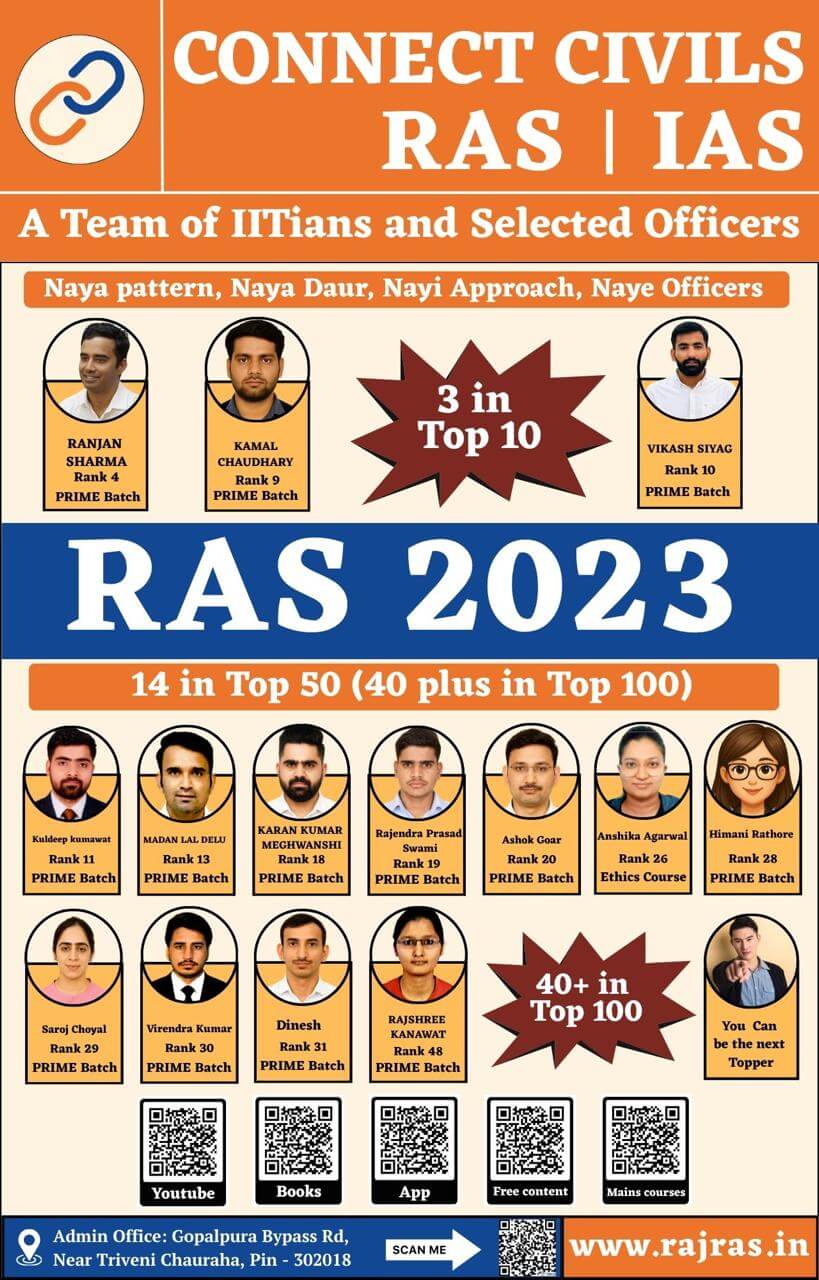Rajasthan During Mahajanpada Period marks an important phase in Rajasthan History when parts of the region were integrated into powerful republican states or kingdoms. This period (600 BCE – 300 BCE) saw the rise of political organizations like Matsya Mahajanapada, influencing the early socio-political landscape of Rajasthan.
Rajasthan During Mahajanpada Period (600 BCE – 300 BCE)
The end of Vedic India is marked by linguistic, cultural and political changes. By the 6th century BCE, the political units consolidated into large kingdoms called Mahajanapadas. The age is also referred to as the period of Second Urbanization. The Pre-Buddhist north-west region of the Indian subcontinent was divided into several Janapadas demarcated from each other by boundaries. Each of these Janapadas was named after the Kshatriya tribe (or the Kshatriya Jana) who had settled therein. Ancient Buddhist texts like the Anguttara Nikaya make reference to sixteen Mahajanpadas and republics which had evolved and flourished in the Indian Subcontinent.
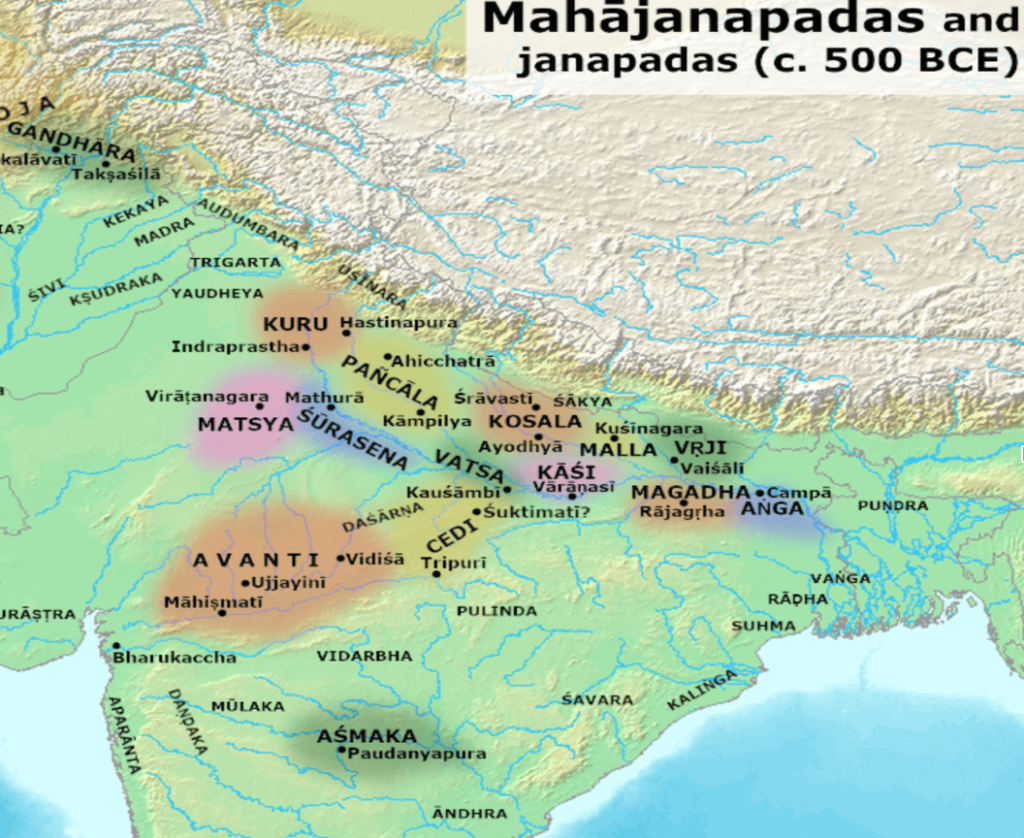
Matsya Mahajanapada :-
- The modern districts of Jaipur, Alwar & Bharatpur formed part of Mahajanapada of Machcha or Matsya.
- The capital of Matsya was at Viratnagar (present-day Bairath), which is said to have been named after its founder king, Virat.
- The kingdom came under the control of the neighboring Chedi Kingdom in the 5th century.
Surasena Mahajanapada
- The capital of Saurasena janpada is located near modern day Mathura.
- It covers the region of Alwar, Bharatpur, Dholpur & Karauli.
Kuru Mahajanapada :-
- The capital of Kuru Janpada was Indrapath.
- It covered parts of the northern Alwar region.
Rajasthan after Alexander Invasion (326 BC)
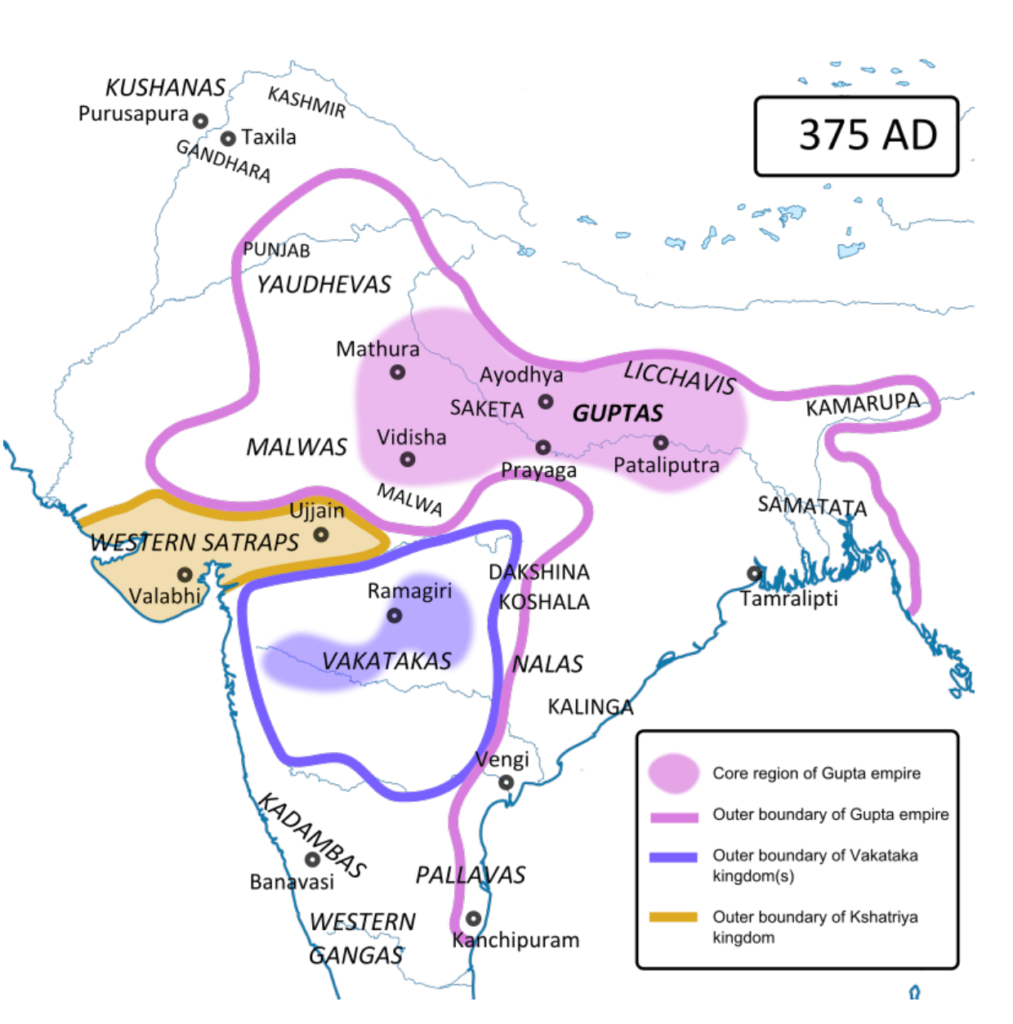
Due to Alexander’s invasion in 326 BCE, tribes of South Punjab—especially the Malav, Shivi, and Arjunayan—migrated to Rajasthan. Punjab and Rajasthan became the nucleus of a number of oligarchies or tribal republics, whose local importance rose and fell in inverse proportion to the rise and fall of larger kingdoms. According to coins recovered, the most important politically were the Audambara, Arjunayanas, Malavas, Kunindas, Trigartas, Abhiras, Yaudheyas, and Shibis (Shivi).
Arjunayana
- Arjunayanas had their base in the present-day Bharatpur-Alwar region.
- They emerged as a political power during the Shunga period (c. 185 – c. 73 BCE).
Rajnaya
- Different scholars have ascribed different regions to Rajnaya janapada.
- Based on coins Cunningham suggested their region as near Mathura.
- Smith suggested former Dholpur state as orginal home of Rajnaya and Rapson ascribed them in same region as of Arjunayanas & Kings of Mathura.
Shivi or Shivi
- Shivi gana covered present districts of Udaipur & Chittorgarh.
- The Shibis (Shivi) migrated from the Punjab to Rajasthan and settled at Madhyamika (later Nagri), located near Chittaurgarh.
- Nagri was excavated in 1904 A.D by D. R. Bhandarkar
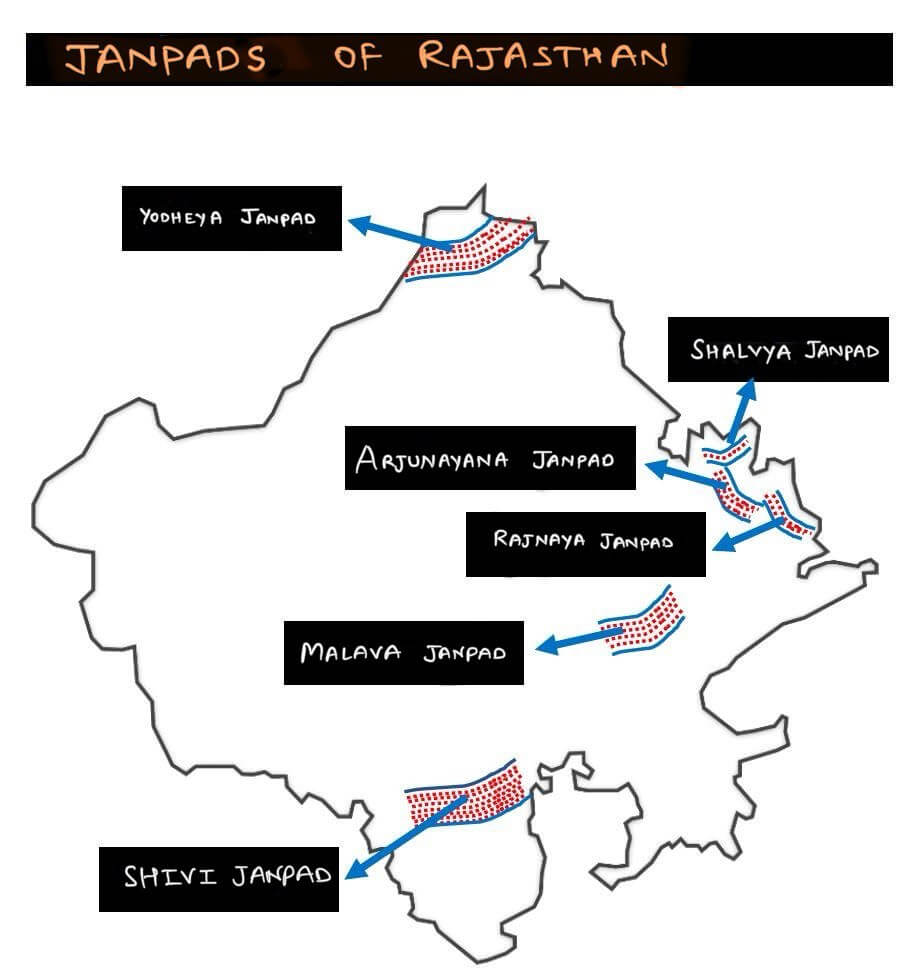
Malavas
- The Malavas are actually mentioned in the Mahabhashya of Patanjali.
- According to D. R. Bhandarkar, they initially lived in the Punjab; later, they migrated to eastern Rajasthan (Jaipur & Tonk), and finally to a region in Madhya Pradesh, which is known as Malwa after them.
- Their capital in Rajasthan was Nagar, located in Tonk.
Shalvya
- It was situated in Alwar district.
Yodheya or Yaudheyas
- Yaudheya or Yaudheya Gana was an ancient confederation who lived in the area between the Indus river and the Ganges river. Present Ganganagar & Hanumangarh districts formed part of their gana.
- They find mention in Pāṇini’s Ashtadhyayi and Ganapatha.
- Later, the Junagarh rock inscription (c. 150 CE) of Rudradaman-I acknowledged the military might of the Yaudheyas.
Note – The region surrounding modern districts of Bikaner & Jodhpur was referred to as ‘Jangaldesh’ during Mahajanpada period.
Maurya Rule in Rajasthan (321-184 BCE)
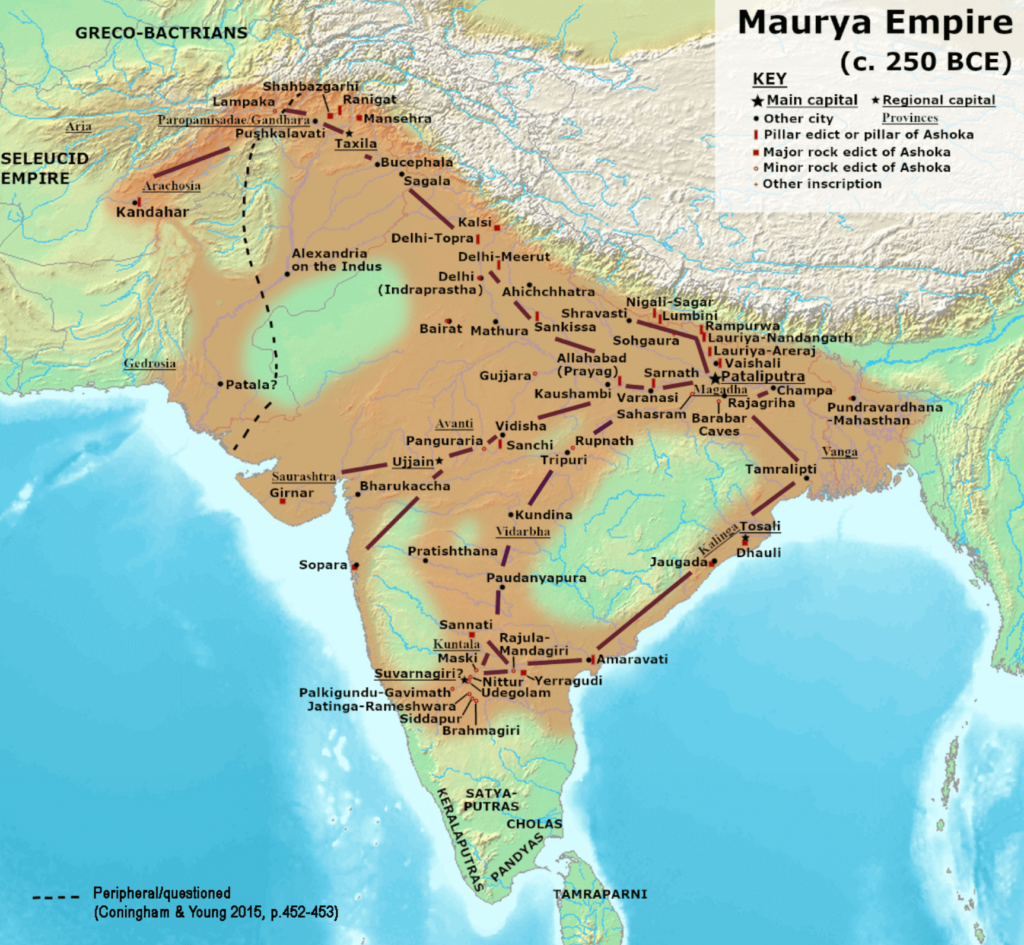
The Mauryan power extended to Rajasthan, Sindh, Gujarat, and Konkan during Chandragupta Maurya’s reign, collectively known as the ‘Upper Janapada‘ or ‘West Janapada.’. The ruins of the Bijak-ki-pahadi, a Buddhist Chaitya from the 3rd century BCE located in Bairath, are the oldest free-standing Buddhist structures in India. The pottery excavated from Bairath is of the NBPW type, providing evidence that Bairath was part of the Mauryan Empire. Maan Mori, of the Maurya dynasty ruled the kingdom till 734 AD when he was killed by Bappa Rawal of the Guhilot clan. Born as Kalbhoj, Bappa Rawal was the founder of a dynasty, which later came to rule Mewar. The Kanaswa inscription of Kota also tells about the king Dhawal of Mauryan dynasty ruling the region.
Invasion of Foreign Tribes:
After the fall of the Mauryan Empire, Rajasthan was divided into small Ganas, leading to increased invasions by foreign tribes. Greek king Menander established his kingdom by capturing Madhyamika Nagari (Chittorgarh) around 150 BC. References to these invasions are found in texts like the Gargi Samhita, Patanjali’s Mahabhashya, and the Mahabharata. In the 1st century BC, the Scythians began invading western Rajasthan. Kanishka’s inscription indicates that the Kushans ruled eastern Rajasthan from 83 AD to 119 AD. The Sudarshan Lake inscription of 150 AD shows that the Kushan kingdom extended from the desert region to Sabarmati.
Currency Evidences:
- Bairath (Jaipur), 8 punch-marked and 28 Indo-Greek coins (16 of Menander) were discovered.
- From Sambhar, 200 coins were found, including 6 silver punch-marked coins and 6 Indo-Sassanian coins.
- Kushan and Gupta coins were found during excavations at Naliasar.
Sakas (1st AD)
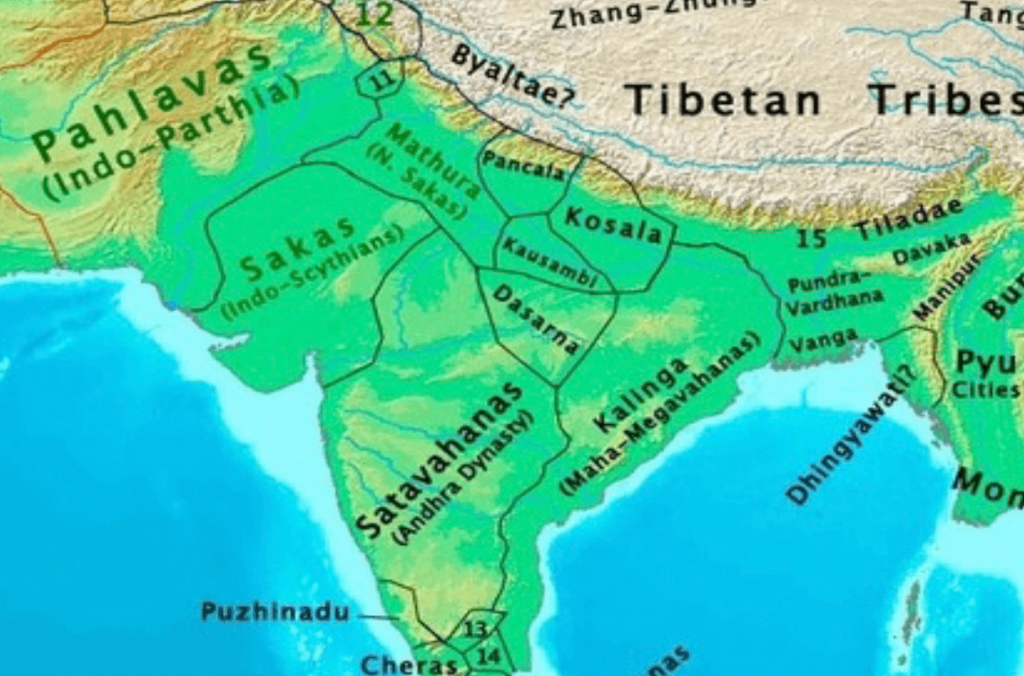
- The Indo-Scythians: are a branch of the Sakas who migrated from southern Siberia into Bactria, Sogdia, Arachosia, Gandhara, Kashmir, Punjab, Gujarat, Maharashtra and Rajasthan, from the middle of the 2nd century BCE to the 4th century CE. The first Saka king in India was Maues or Moga who established Saka power in Gandhara and gradually extended supremacy over north-western India.
- Western Satraps: The Western Satraps (35-405 CE) were Saka rulers of modern Gujarat, southern Sindh, Maharashtra,Rajasthan and Madhya Pradesh states.
- They were successors to the Indo-Scythians and were contemporaneous with the Kushan Empire, which ruled the northern part of the Indian subcontinent
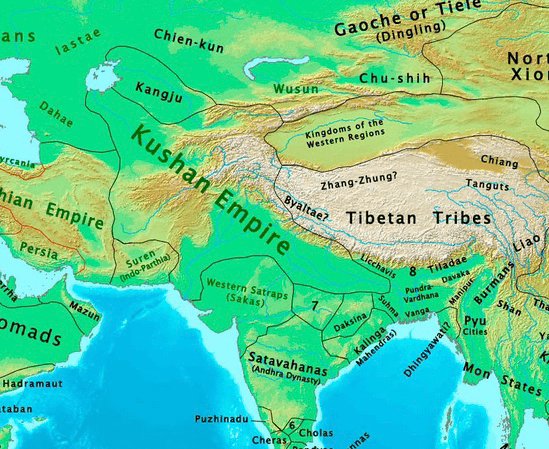
Rajasthan In Gupta Period
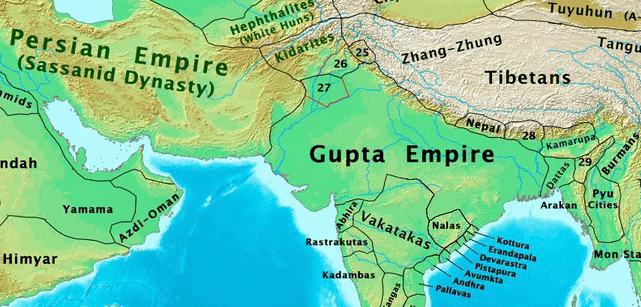
Before the rise of Gupta’s, Rudrasimha II, of the Western Satraps, ruled Rajasthan. Samudra Gupta defeated Rudrasimha II in 351 A.D to capture the southern part of Rajasthan. Various sculptures from the Gupta period have been found in Ajmera (Dungarpur), Abhaneri (Dausa), Mandore, Osiyan (Jodhpur), Neelkanth, Sacheli (Alwar), Kalyanpur, and Jagat (Udaipur). The largest collection of Gupta gold coins, around 2,000, has been discovered in Nangala Chail village of Bayana (Bharatpur), most of which belong to Chandragupta-II Vikramaditya. Gupta period coins have also been found in Sukhpura and Raidh (Tonk), Aheda (Ajmer), Maurili, and Sambhar (Jaipur). Additionally, remains of Gupta period buildings and temples can be seen in Bhinmal and other sites in Jalore district.
Huna Empire in Rajasthan
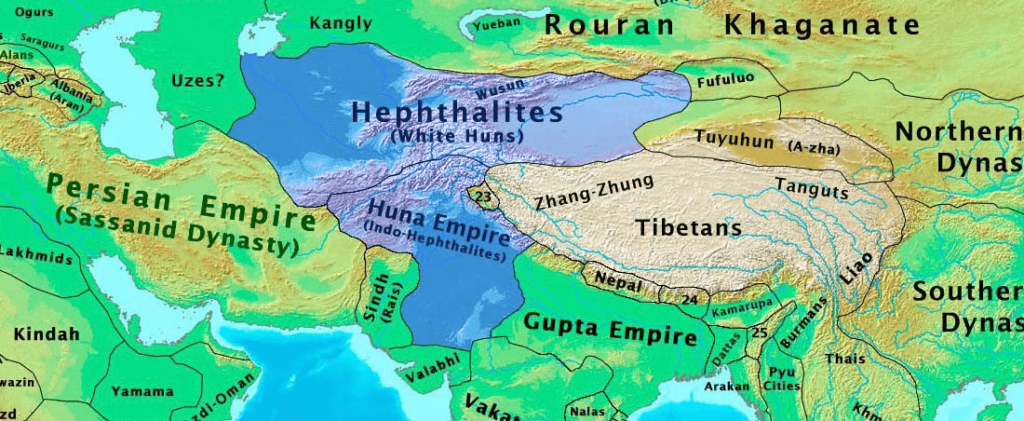
Huna invasions were started in Gupta’s reign. In 503 C.E, Huna King Toranmal defeated Gupta’s and occupied Rajasthan. Yashovarman(2nd Aulikara dynasty) of Malwa empire defeated Huns around 532 C.E and established peace in Rajasthan but, as soon as he died there was unrest in Rajasthan again.
Vardhana Empire
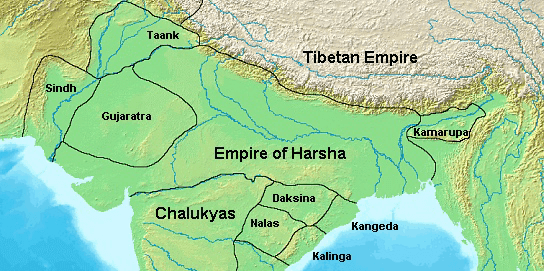
After the downfall of the Gupta Empire in the middle of the 6th century, North India was split into several independent kingdoms. Prabhakara Vardhana, who belonged to the Pushyabhuti family, extended his control over neighbouring states. Around 606 CE, Harsha Vardhana ascended the throne and ruled till 647 C.E. During Yashovarman’s reign (Malwa king of the 2nd Aulikara dynasty), his officers in Rajasthan, known as Rajasthaniya, attempted to assert independence in their territories. Meanwhile, the fragmented castes of the ancient republics, living in isolated groups, resumed their struggle for dominance. The lack of central authority further encouraged these tendencies. From the 6th century onward, evidence reveals both conflict and cooperation among these groups.
Gurjara Kingdom
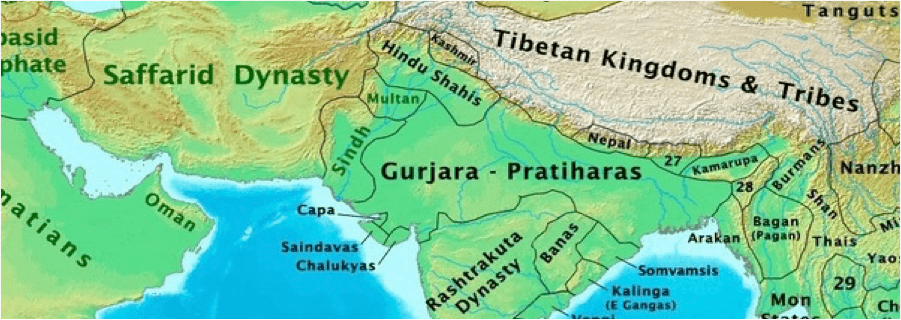
From 550 to 1018 AD, the Gurjars played a great part in the history of Northern India for nearly 500 years. The Gurjara-Pratihara King Nagabhatt I won Kannauj and established rule over most of Rajasthan. The capital of their Kingdom was Shreemal, which is the old name of Bhinmal in Jalore.

